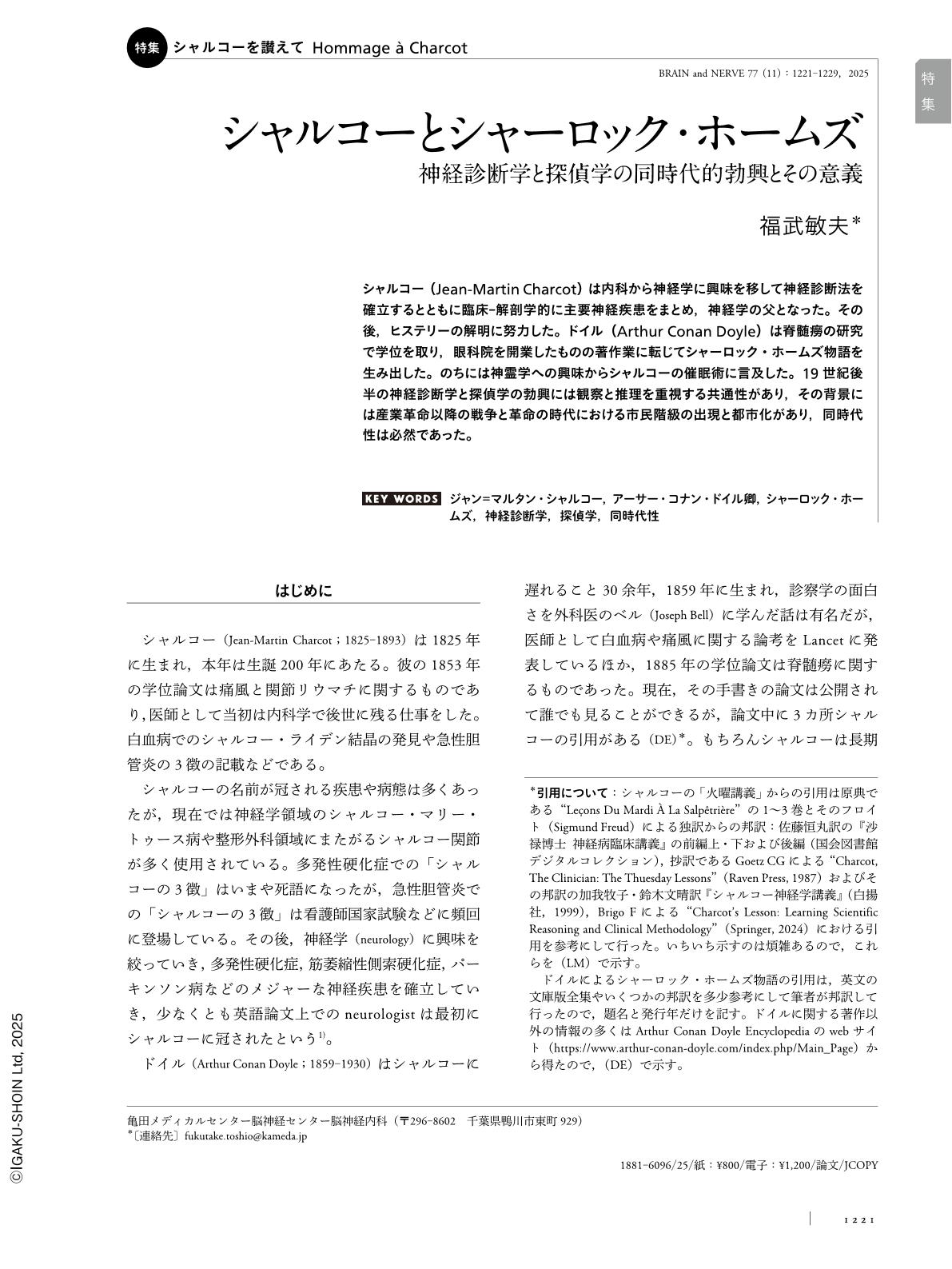Japanese
English
- 有料閲覧
- Abstract 文献概要
- 1ページ目 Look Inside
- 参考文献 Reference
シャルコー(Jean-Martin Charcot)は内科から神経学に興味を移して神経診断法を確立するとともに臨床-解剖学的に主要神経疾患をまとめ,神経学の父となった。その後,ヒステリーの解明に努力した。ドイル(Arthur Conan Doyle)は脊髄癆の研究で学位を取り,眼科院を開業したものの著作業に転じてシャーロック・ホームズ物語を生み出した。のちには神霊学への興味からシャルコーの催眠術に言及した。19世紀後半の神経診断学と探偵学の勃興には観察と推理を重視する共通性があり,その背景には産業革命以降の戦争と革命の時代における市民階級の出現と都市化があり,同時代性は必然であった。
Abstract
Jean-Martin Charcot (1825-1893) gradually shifted his medical interest from internal medicine to neurology. Furthermore, he established neurodiagnostic methods that emphasized observation, such as in tabes dorsalis, and summarized core neurological diseases such as amyotrophic lateral sclerosis, Parkinson's disease, and multiple sclerosis in a clinical-anatomical/pathological manner. For his contributions, he is known as the father of neurology. He then worked to elucidate hysteria.
Sir Arthur Conan Doyle (1859-1930), born more than 30 years later, opened an ophthalmology clinic after earning his doctorate in research on tabes dorsalis. However, he then changed direction to writing books, such as Sherlock Holmes stories, and created full-fledged detective studies. Later, he shifted his focus to spiritualism, with an interest in Charcot's hypnotism.
Although their careers are similar, there is no direct connection between Charcot's neurological studies and Conan Doyle's detective stories. However, neurodiagnostic and detective studies emerged in the second half of the 19th century at the same time, although they shared a commonality in content, in that they both emphasized observation and deduction without preconceptions. This contemporaneity was inevitable, as the background to this was the emergence of a middle class and urbanization in the era of war and revolution under capitalism after the Industrial Revolution.

Copyright © 2025, Igaku-Shoin Ltd. All rights reserved.


